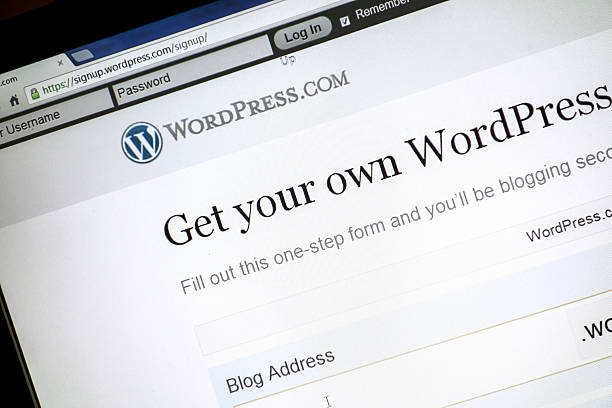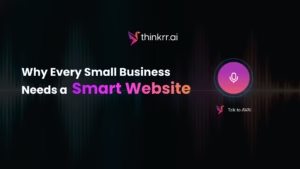The Detailed Guide To Building A WordPress Website

WordPress Developer Toronto presents a useful guide on building wordpress website:
1. Decide a WordPress package (WordPress.com only).
Select a WordPress plan to build your website. As mentioned, WordPress.org only offers one (free) plan option; however, to use it, you must purchase your domain, hosting service, plugins, themes, and everything else associated with your WordPress website.
2. Configure your hosting company and domain name
Choosing a WordPress hosting company and setting up your domain name usually co-occur when building a website. Before discussing how to carry out such duties, let’s discuss the distinction between your domain name and the hosting company.
Consider your domain name and house address; it’s how people can find your website on the Internet. Your website files are kept at your hosting company, which is similar to your home. Your website wouldn’t have a place to “live” on a server if you didn’t have a hosting company. WordPress hosting companies include WP Engine, Bluehost, and Kinsta.
3. Put WordPress online.
To connect your new domain to the website, you must install the CMS if you use a hosting service other than WordPress.
(Don’t worry, this method appears to be the same regardless of the hosting company you select.)
You needn’t go through this step if you decide to utilize a managed WordPress hosting provider like WP Engine or Kinsta because those services were created especially for WordPress and already have WordPress installed.
Log into your GoDaddy account and select Manage from the Web Hosting menu.
Your account information will show on a screen for you.
4. Decide on a theme
Using one of the many WordPress themes or templates, you can change the layout, formatting, color scheme, font, and other visual elements of your website.
WordPress applies a somewhat boring default theme by default.
You can keep it, but the people who visit your website might not be as impressed.
Regardless of cost, a custom WordPress theme will give your website to your buyer personas an inviting and expert appearance.
There are countless themes and layouts to choose from, similar to the various hosting companies offered.
We’ve prepared a list of twenty of the best themes and templates and organized them into categories for your convenience.
5. Increase your website’s posts and pages.
Whenever you upload material to a WordPress website, posts and pages are often how that content is displayed.
Because posts (or “dynamic pages”) automatically position your most recent website content at the top of your featured content, they are frequently utilized for blogs and portfolios.
Because added material stays in the same position on static pages, business owners are more attracted to them.The two primary post kinds in WordPress are posts and pages. Other native post types and custom post types are also available. We can limit ourselves to pages and posts for now.
6. Make your website unique.
There are several options to customize your website and the theme you select. Let’s go over some possibilities.
Let’s start by customizing your site’s title. Choose Settings > General from the admin dashboard. Include your website’s tagline and title here. Other fundamental site information such as your URL, email, time zone, and more are also switchable.
7. Put in Plugins
The user experience is improved through plugins, which are bits of software that give your WordPress website more capability. There are possibilities for almost any website and user, with more than 55,000 plugins readily available. Among the most widely used plugins on the market are:
- The HubSpot plugin may easily add pop-ups, forms, and live chat to your WordPress website. And as an added benefit, combine this plugin with your HubSpot CRM and other CRM plugins.
- Businesses utilize All in One SEO, a well-regarded SEO plugin, to raise their ranks and find fresh SEO development chances.
- The Events Calendar is a simple calendar that makes it simple to schedule events from your website.
- The go-to plugin for on-page SEO is Yoast SEO.
8.Site Speed Optimization
The user experience of a website is critically dependent on its performance. Your visitors will leave your site soon if a page loads slowly. Avoid frustrating customers with poor speeds.
By turning on browser caching, you can enhance the performance of your website. Temporarily saving data from your website on visitors’ browsers is known as browser caching. Your website will load faster because your content won’t need to be transmitted from the web server to the browser.
Tips for WordPress websites
We’ve provided a list of 20 WordPress tips and tricks below to assist you in making your website as effective and user-friendly as possible.
1. Pay attention to the fundamentals and use a WordPress theme that matches your company and website content to produce an excellent user experience.
2. When naming your files in WordPress, use dashes rather than underscores. Your file will seem like one long word since Google treats underscore the same way it treats joiners. That won’t aid in your SEO efforts. To make it clear that some words are distinct, use dashes. Use www.example.com/this-is-an-example rather than www.example.com/this is an example, for instance.
3. If you have queries or concerns while building or utilizing your website, use WordPress’s online support. Their website lists various forums and ways to get in touch with WordPress specialists.
4. Add image alt text. You can utilize image alt text to raise your SEO and Google rankings.
5. Make every effort to keep your sidebar organized. Focus on the essentials and consider what information your website’s users and buyer personas need to have access to quickly.
6. Regularly backup your website, so you have all you need to fully recover your material if you ever face technical issues or lose access. Several plugins, including Snapshot Pro, are designed expressly for backing up your WordPress content.





